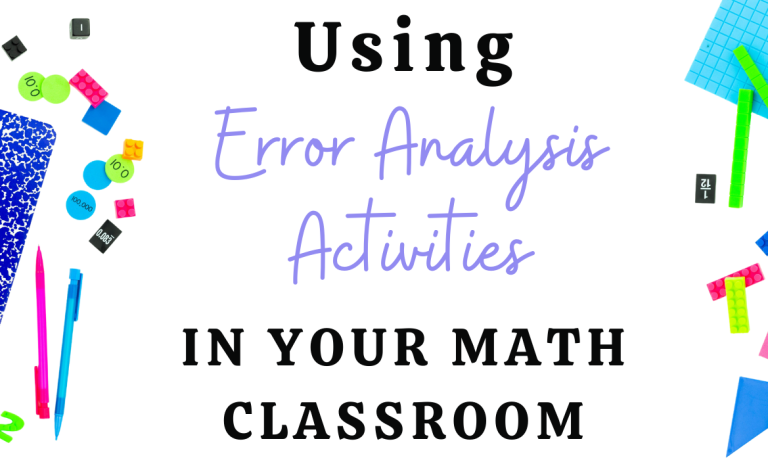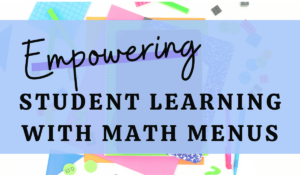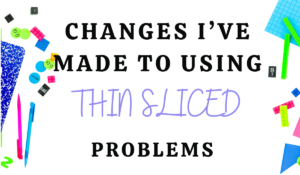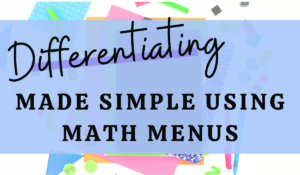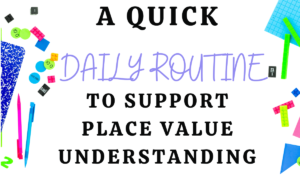Using error analysis activities in your math classroom will do a lot of things. It will get students talking, using vocabulary, correcting mistakes, and much more. Keep reading if you want to know how and why I use them, as well as a free template!
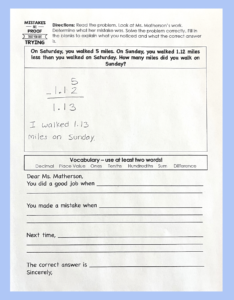
What Is It?
The error analysis activity we use in my classroom is called Dear Ms. Matherson. I have solved a problem, and I have made a mistake. Students work together to figure out my mistake, solve it correctly, and then write me a note explaining my mistake and giving me advice for next time.
Why I Use Them
There are many reasons why I love using error analysis activities. Finding and correcting a mistake takes a deeper level of understanding than just solving a problem. So when my students are able to find an error, they are showing a higher level understanding. I also use them as a way to practice vocabulary. I have students write in our error analysis activity, and they are required to use two vocabulary words. This helps develop their vocabulary. Error analysis activities also help spark discussions. Students are working in their groups to try to find the mistake. This will naturally start some discussions. Another reason why I use this is to continue to show that everyone makes mistakes. In this error analysis activity, students are correcting my mistake, which is why we call it Dear Ms. Matherson. So every week they are correcting their teacher. What middle schooler doesn’t love that?
How I Use Them
I use error analysis activities in my classroom as part of my math menus. If you haven’t seen what math menus are, click hereThe Basics of Math Menus to read more about it on my blog post. When students have it assigned on that day, they simply go over and get the activity. This is one of the activities that I put every week as a Must Do activity. I do this because of the level of impact this type of activity has on my students.
What Mistakes I Make
The mistakes I make on the worksheet change each year. I base my mistakes off of my current students. Whatever mistakes I see them making are the mistakes I make on this error analysis activity. This helps get rid of a common misconception that is going on, but by saying that the teacher is the one making that mistake. I have found that when they are correcting me, they are more likely to remember not to make that mistake (mostly because they love telling me what to do).
Using Vocabulary
This is a new part of this error analysis activity that I implemented this year, and I am so happy that I did! I now have a vocabulary section where I list 5-10 vocabulary words. The students are required to use at least two of the vocabulary words. In the beginning I started making the vocabulary words only words that were relevant. But now, I use a lot of words. Sometimes students get creative and incorporate vocabulary words that I did not think was possible, and sometimes the words are just there for students to think about how they are not relevant.
What About Students Who Struggle with Writing?
I have a lot of students in my class who struggle with writing. It could be because they have an IEP, or they are a multi-lingual learner, or because they struggle with physically writing that much. Regardless, they participate in this error analysis activity. I write more for these students, and only ask them to write vocabulary words that fit in the blanks that I make for them. They are still looking for my error and solving it the correct way, and they are still using vocabulary words and getting a deep understanding. They are just writing less.
What is the Hardest Part for Students?
Students really enjoy this error analysis activity. The hardest part for them is definitely the sentence that starts with “next time.” When I started this, I would get answers like “next time check your work” or “next time read the question more carefully” or “next time ask a friend.” So we had a discussion. “I did check my work.” “I did read the question carefully.” “I wasn’t allowed to ask a friend.” That got them thinking. The “next time” sentence needs to be specific. It needs to be something that will help me not make the same mistake next time. This hits such a deep level of understanding!
If you are going to start implementing one new thing in your classroom, I would highly recommend using an error analysis activity in your classroom. If you are still not sure where to start, then click Error Analysis Templates for a free power point template of my Dear. Ms Matherson error analysis activity! Connect with me on Instagram or email to let me know how it goes!

